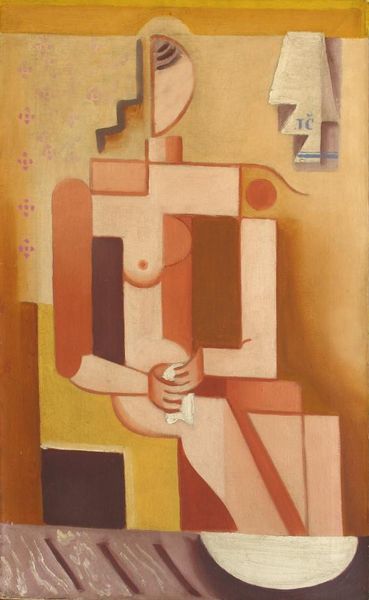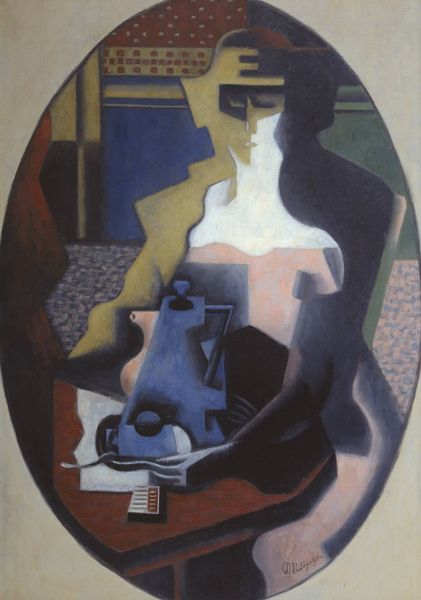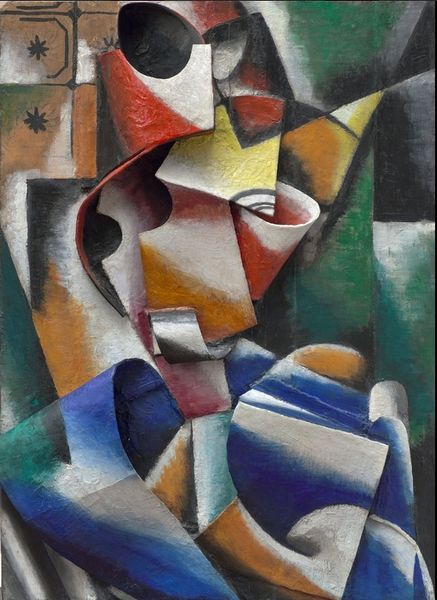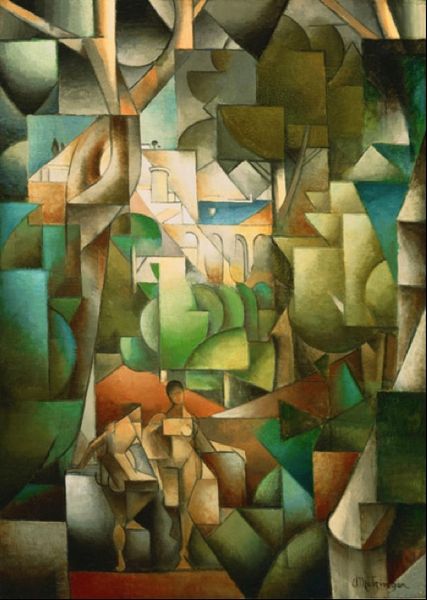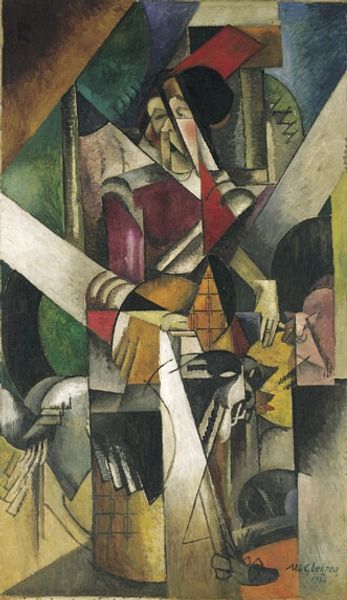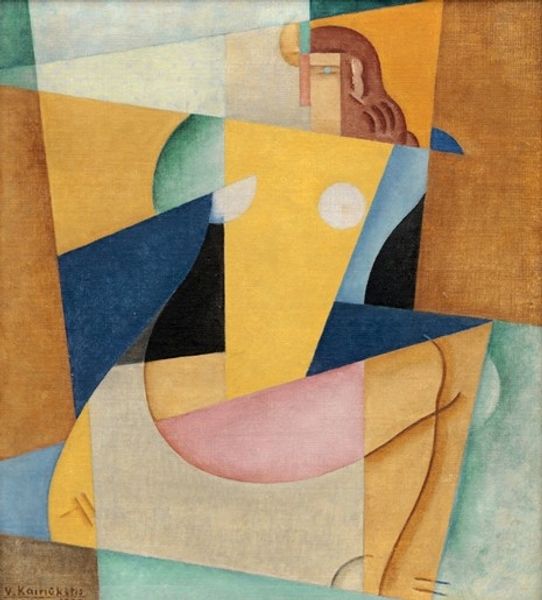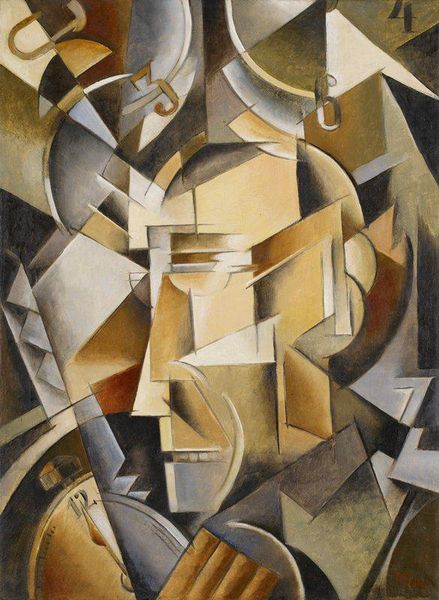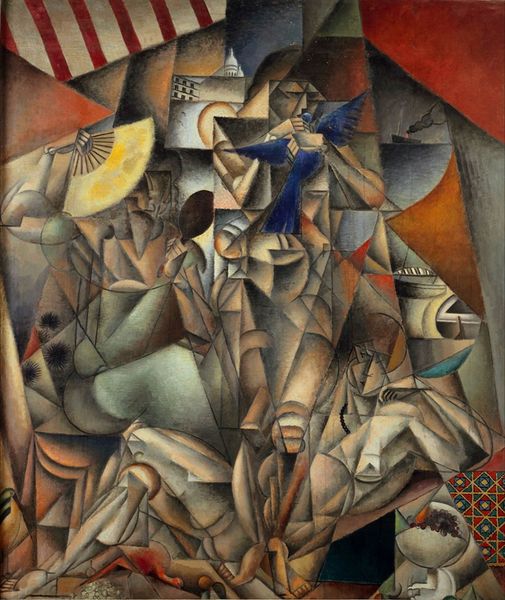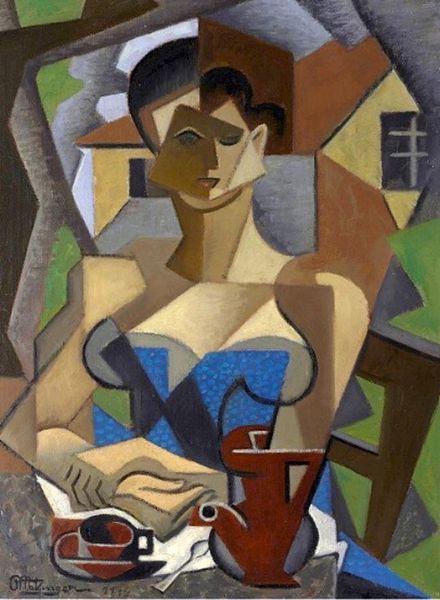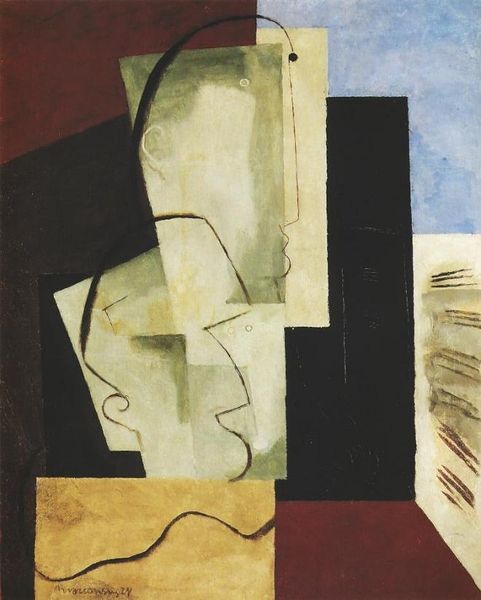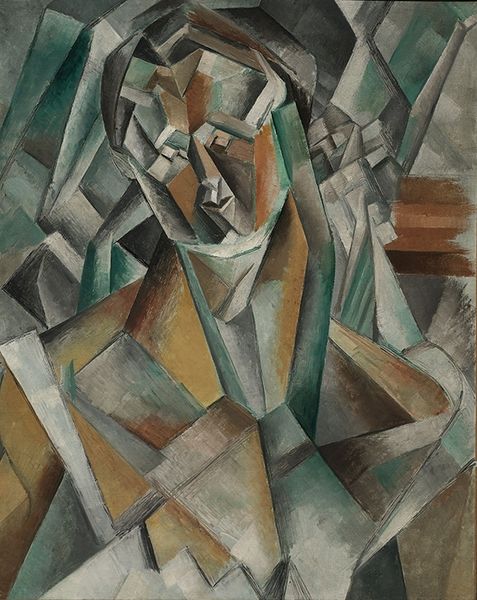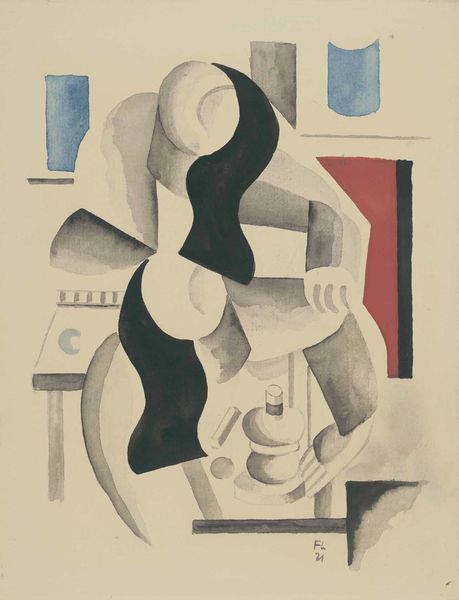
painting, oil-paint
#
portrait
#
cubism
#
art-nouveau
#
abstract painting
#
painting
#
oil-paint
#
oil painting
#
geometric
#
cityscape
#
portrait art
#
modernism
Copyright: Public domain US
Editor: This is "Le goûter (Tea Time)" by Jean Metzinger, painted in 1911. It’s an oil painting with this fascinating Cubist style that really breaks down the figure. It almost feels like I'm looking at a stained-glass window! What do you see in this piece? Curator: The shattering of form immediately evokes earlier Symbolist desires to represent interiority. Observe how the sitter's face is both present and absent; it is rendered in hard edges, as if behind glass, while her interior world may be suggested by the prismatic cityscape behind her. Do you find that this approach aligns with modern notions of identity formation? Editor: I think it does. Identity feels less like a solid thing and more like a collection of perspectives and experiences. This painting shows a fragmented sense of self with those perspectives overlaid. The spoon is so tiny! It is intriguing how something so essential to the tea is dwarfed. Curator: Indeed. The spoon, often symbolic of nourishment, loses its primacy within this fragmented composition. Consider its symbolic diminishment as potentially speaking to a loss of innocence, a theme echoed through the Cubist’s shattering of other pictorial symbols around this time. The 'Tea Time' becomes less about simple refreshment, and more a modern reflection of identity lost. Editor: It's like Metzinger uses these fragmented images to explore how our surroundings influence how we think and see ourselves. All of the geometrical shapes combine to form a complicated story! It changes my entire view. Curator: Precisely. Art continuously helps us to reconstruct those cultural narratives, finding fresh ways to look and interpret, not just what's in the painting, but what persists from the past.
Comments
No comments
Be the first to comment and join the conversation on the ultimate creative platform.

